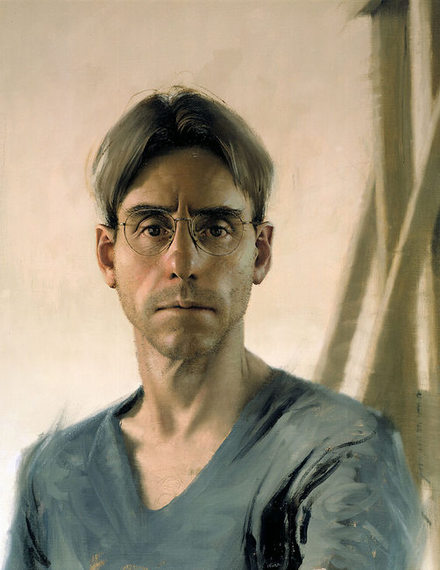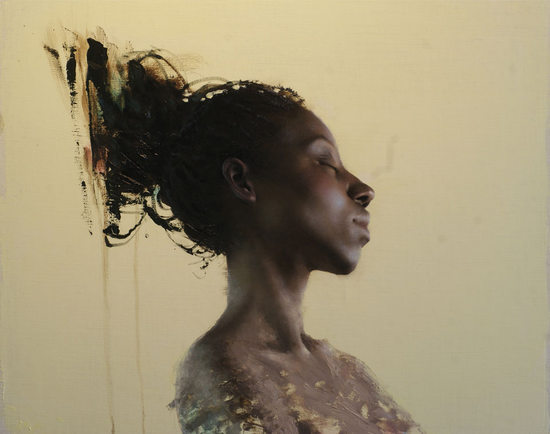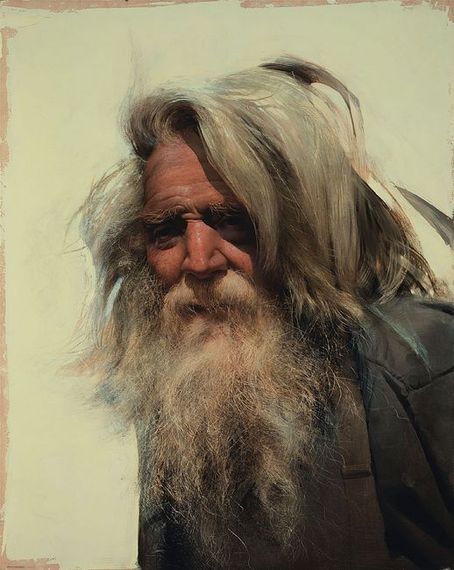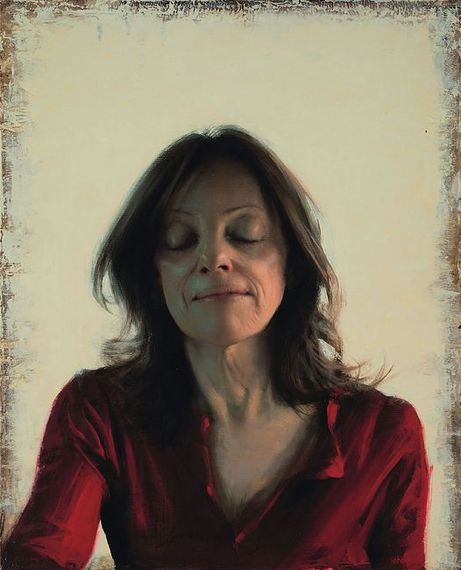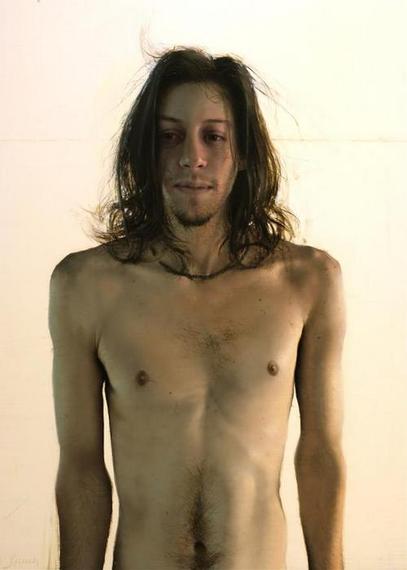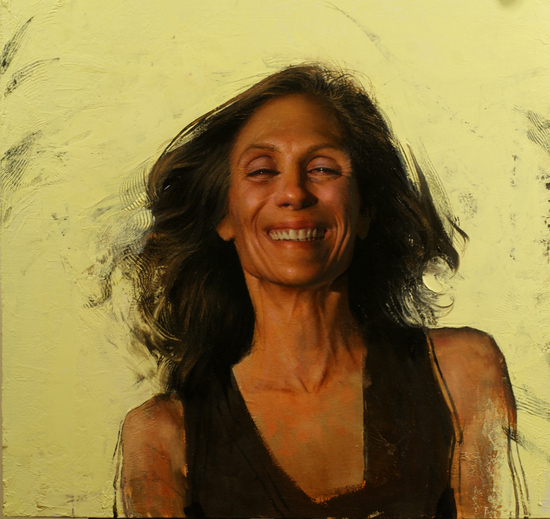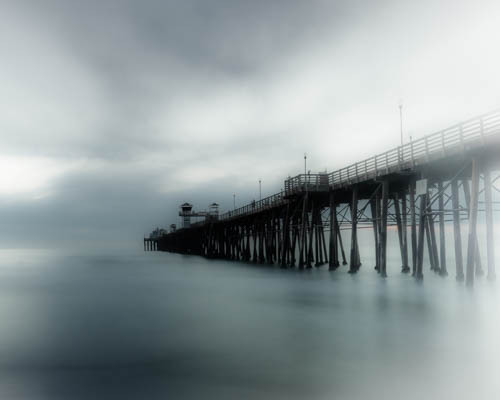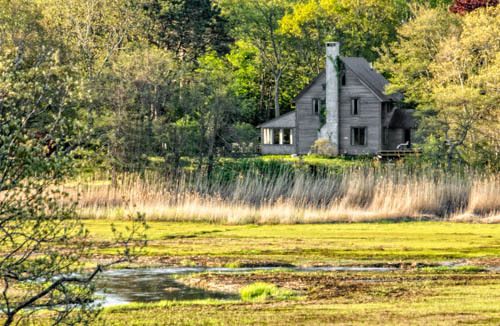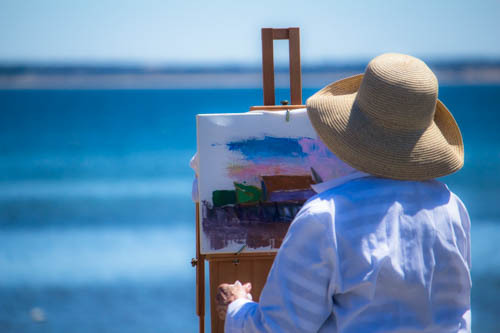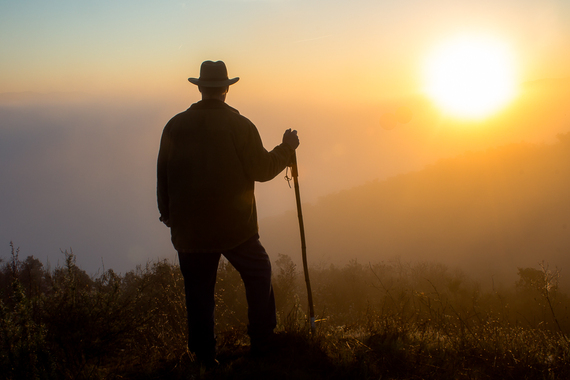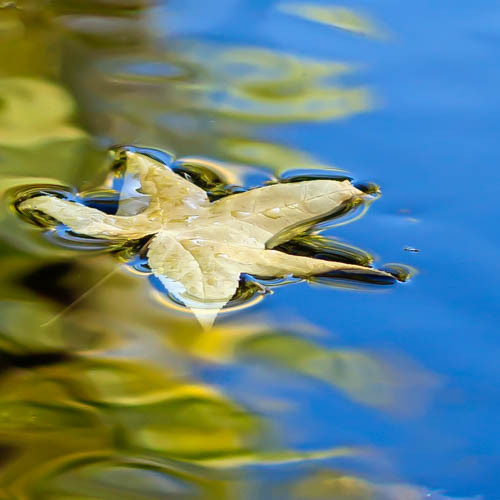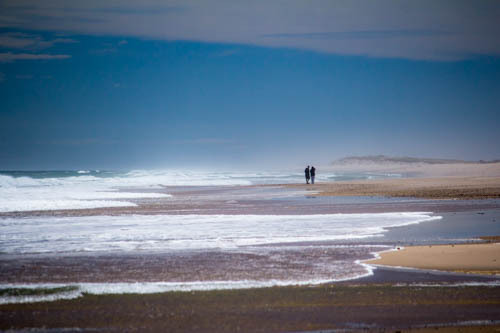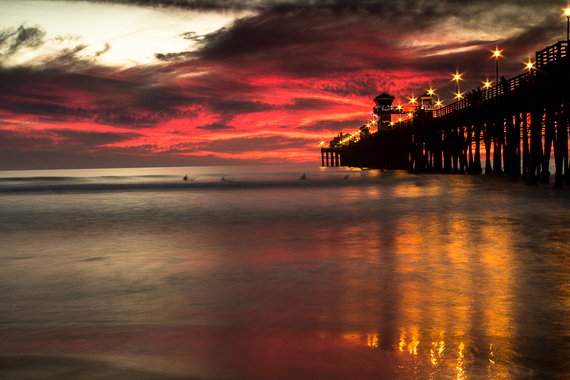We had been impressed by the work of the Cuban artist Roberto Fabelo in Havana, both out in public in the Plaza Vieja and in the Museo de Bellas Artes, so we were keen to attend the opening of his solo show at the Museum of Latin American Art in Long Beach. The show was curated by Juan Delgado Calzadilla, who had generously hosted our tour group in his apartment overlooking the Malecón, and both artist and curator were on hand to greet us at the opening. Here's Fabelo's rendering of that same Malecón, the famous esplanade along Havana's sea front:
![2014-07-08-Baroque_Seafront.jpg]()
Roberto Fabelo (Cuba, b. 1951)
Malecón Barroco / Baroque Seafront, 2012
Oil on canvas
64 x 114 in.
Courtesy of the artist
"Malecón Barroco" -- translated as "Baroque Seafront" -- is in many ways illustrative of Fabelo's baroque vision, though not in its grisaille color effects. The crowding of the canvas with naked, buxom female forms, the carnival masks, in this case mostly marine in reference, the ornate busy-ness of the composition -- and, too, the darker side of the baroque vision, the spikes, fork tines and hooks, the satanic tails and barbs that contrast the exuberant celebration of lively sensuality with the adumbration of sinfulness, damnation, and death. There's both Peter Paul Rubens in this image, and Hieronymus Bosch.
More frequently, though, Fabelo's paintings are ablaze with color. Here in "Contemplation of the Pearl"...
![2014-07-08-Contemplation_of_the_Pearl.jpg]()
Roberto Fabelo (Cuba, b. 1951)
Contemplación de la perla en el muro del malecón /
Contemplation of the Pearl on the Seafront Mural, 2012
Oil on canvas
66 ¾ x 89 ½ in.
Courtesy of the artist
... set, similarly, on a sea wall, the women are depicted in an array of improbable, glowing color, their bodies full, sensual, and presented with clear sexual invitation -- though adorned, again, with angel wings, fish spines or feathers. Accompanied by what appears to be a single male figure -- the artist, perhaps? -- they contemplate the pearl of perfection that looms, Magritte-like, before them on an oyster shell. Their quasi-religious adoration of this object is disturbed not only by the enormous bug that encroaches upon their space from the left side of the canvas, but by the incongruous rubber tire in the foreground, the heavy nail that violently pieces the wall, and the effusions, seemingly from their bodies, that ooze down the wall onto the sidewalk.
The bird mask worn by the woman to the right is a familiar theme in Fabelo's work. We find them everywhere, both in the paintings and the exquisitely executed drawings on printed book pages...
![2014-07-08-At_the_Cellings_Breast.jpg]()
Roberto Fabelo (Cuba, b. 1951)
Al techo del seno / At the Top of the Breast, 2013
Mixed media on paper
6 ½ x 9 ¾ in.
Courtesy of the artist
... in which the artist explores a myriad of ideas and images in poetic detail. (The drawings are displayed in the exhibition in a special installation in the center of the gallery, inviting visitors to examine them with the kind of close attention they require.) And he's intrigued not only by bird masks, but the birds themselves, presented anthropomorphically in relation to the human figures that populate the paintings. Bird-as-human and human-as-bird are often indistinguishable. In Fabelo's work, they literally ride each other, as though in a constant struggle for dominance. With all their beauty -- and the artist does not stint on this -- and with their omnipresent, always aggressive beaks and beady eyes, the presence of the birds conveys a hint of the cruelty and hunger for self-gratification inherent in the human psyche. (In this context, we note also the spectacle of naked women trussed, skewered and ready for roasting on kabob sticks.)
And I see Fabelo's work essentially as an exploration of that psyche, the life of the human mind and its persistent struggle between its light side and its dark. The intimacy and the passion his work exude -- along with the unambiguously autobiographical revelations that pop up surprisingly in the drawings here and there -- suggests that it is the artist's own inner desires and demons he explores. That the paintings speak so compellingly to us as viewers suggests that we all share his obsessions at some deep level of the mind: we recognize ourselves in them. Paradoxically, we use masks to both reveal and hide aspects of our true nature: to hide them, obviously, for fear of what others might see and how they might judge us if they really knew; and to reveal, because we also nurture the perverse compulsion to be known by others for who we are.
Fabelo models this work for us with passion and unsparing honesty. And it is "work." Without seeming in any way labored, both paintings and drawings reveal the intensity of physical labor and attention that went into their creation. The infinite complexity of their composition and the intricate, untiring exploration of their motif and themes are witness to a critical, highly conscious mind at work, even as it delves so boldly into the underworld of the unconscious. There's an authenticity that glows through all the surrealistic conceit in Fabelo's work, disarming potential accusations of cynicism or misogyny. Behind it all we might hear the haunted--haunting--voice of the 19th century French poet, Charles Baudelaire, in the final line of the poem that introduces his reader to Les Fleurs du mal: "Hypocrite lecteur, mon semblable, mon frère..." Fabelo makes us complicit in both his nightmare and his dream.
Note: Couturier Gallery in Los Angeles will be hosting a Roberto Fabelo exhibition September 13 through October 18 this year.

Roberto Fabelo (Cuba, b. 1951)
Malecón Barroco / Baroque Seafront, 2012
Oil on canvas
64 x 114 in.
Courtesy of the artist
"Malecón Barroco" -- translated as "Baroque Seafront" -- is in many ways illustrative of Fabelo's baroque vision, though not in its grisaille color effects. The crowding of the canvas with naked, buxom female forms, the carnival masks, in this case mostly marine in reference, the ornate busy-ness of the composition -- and, too, the darker side of the baroque vision, the spikes, fork tines and hooks, the satanic tails and barbs that contrast the exuberant celebration of lively sensuality with the adumbration of sinfulness, damnation, and death. There's both Peter Paul Rubens in this image, and Hieronymus Bosch.
More frequently, though, Fabelo's paintings are ablaze with color. Here in "Contemplation of the Pearl"...

Roberto Fabelo (Cuba, b. 1951)
Contemplación de la perla en el muro del malecón /
Contemplation of the Pearl on the Seafront Mural, 2012
Oil on canvas
66 ¾ x 89 ½ in.
Courtesy of the artist
... set, similarly, on a sea wall, the women are depicted in an array of improbable, glowing color, their bodies full, sensual, and presented with clear sexual invitation -- though adorned, again, with angel wings, fish spines or feathers. Accompanied by what appears to be a single male figure -- the artist, perhaps? -- they contemplate the pearl of perfection that looms, Magritte-like, before them on an oyster shell. Their quasi-religious adoration of this object is disturbed not only by the enormous bug that encroaches upon their space from the left side of the canvas, but by the incongruous rubber tire in the foreground, the heavy nail that violently pieces the wall, and the effusions, seemingly from their bodies, that ooze down the wall onto the sidewalk.
The bird mask worn by the woman to the right is a familiar theme in Fabelo's work. We find them everywhere, both in the paintings and the exquisitely executed drawings on printed book pages...

Roberto Fabelo (Cuba, b. 1951)
Al techo del seno / At the Top of the Breast, 2013
Mixed media on paper
6 ½ x 9 ¾ in.
Courtesy of the artist
... in which the artist explores a myriad of ideas and images in poetic detail. (The drawings are displayed in the exhibition in a special installation in the center of the gallery, inviting visitors to examine them with the kind of close attention they require.) And he's intrigued not only by bird masks, but the birds themselves, presented anthropomorphically in relation to the human figures that populate the paintings. Bird-as-human and human-as-bird are often indistinguishable. In Fabelo's work, they literally ride each other, as though in a constant struggle for dominance. With all their beauty -- and the artist does not stint on this -- and with their omnipresent, always aggressive beaks and beady eyes, the presence of the birds conveys a hint of the cruelty and hunger for self-gratification inherent in the human psyche. (In this context, we note also the spectacle of naked women trussed, skewered and ready for roasting on kabob sticks.)
And I see Fabelo's work essentially as an exploration of that psyche, the life of the human mind and its persistent struggle between its light side and its dark. The intimacy and the passion his work exude -- along with the unambiguously autobiographical revelations that pop up surprisingly in the drawings here and there -- suggests that it is the artist's own inner desires and demons he explores. That the paintings speak so compellingly to us as viewers suggests that we all share his obsessions at some deep level of the mind: we recognize ourselves in them. Paradoxically, we use masks to both reveal and hide aspects of our true nature: to hide them, obviously, for fear of what others might see and how they might judge us if they really knew; and to reveal, because we also nurture the perverse compulsion to be known by others for who we are.
Fabelo models this work for us with passion and unsparing honesty. And it is "work." Without seeming in any way labored, both paintings and drawings reveal the intensity of physical labor and attention that went into their creation. The infinite complexity of their composition and the intricate, untiring exploration of their motif and themes are witness to a critical, highly conscious mind at work, even as it delves so boldly into the underworld of the unconscious. There's an authenticity that glows through all the surrealistic conceit in Fabelo's work, disarming potential accusations of cynicism or misogyny. Behind it all we might hear the haunted--haunting--voice of the 19th century French poet, Charles Baudelaire, in the final line of the poem that introduces his reader to Les Fleurs du mal: "Hypocrite lecteur, mon semblable, mon frère..." Fabelo makes us complicit in both his nightmare and his dream.
Note: Couturier Gallery in Los Angeles will be hosting a Roberto Fabelo exhibition September 13 through October 18 this year.





















